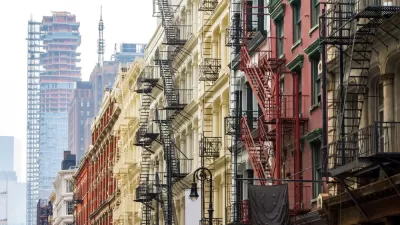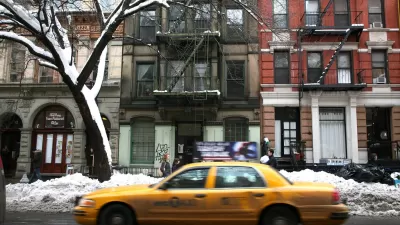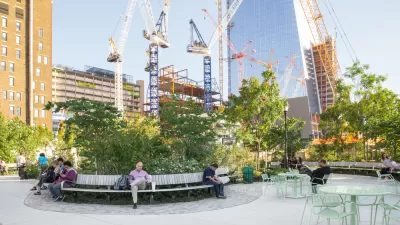We can't build our way out of the housing crisis…but we won't get out without building.
Affordable housing advocates are facing a disturbing new opponent in planning battles across the country: other affordable housing advocates.
Take the battle over implementation of Mayor Bill de Blasio’s proposed Mandatory Inclusionary Housing policy in East New York. The policy would require private developers to ensure that 25 percent of all new housing units are for lower income residents. It is the kind of policy that activists concerned about gentrification have long dreamed of. So it was somewhat ironic that Vickie Been, de Blasio’s housing commissioner, felt compelled to speak out in response to concerns that the plan would cause gentrification and displacement.
Because New York’s inclusionary housing plan is tied to zoning changes, which would allow higher density development along Brooklyn’s major corridors, a number of advocates for the area’s lower income residents have concluded that the plan will add fuel to the booming market and drive rents and for-sale home prices higher than they already are. Been’s response was to remind people that rents were already high and rising and point out that that was the predictable result of a shortage of housing. The new zoning plan, she said, “is not the trigger for displacement; instead, it is a preventative measure.”
A surprisingly similar conflict surrounded a proposed moratorium on new development in San Francisco’s Mission District. The district has been ground zero for the Bay Area’s displacement crisis and Mission activists concluded that a new private housing development was likely to exacerbate the problem by bringing in higher income residents and driving up rent costs. The proposal split the housing advocacy community. Mayor Ed Lee, who has been an unparalleled leader in the fight for more affordable housing funding, and many committed advocates succeeded in convincing San Francisco voters that the moratorium would only make things worse by further restricting supply. The housing shortage, they argued, is the ultimate cause of rising rents and we have to build new housing to make any real progress.
Unfortunately, if we want to work together for more equitable cities, we have to agree on some basic economics. The two sides in this fight see different economic mechanisms behind displacement. One group says prices are rising and people are being displaced because we aren’t building enough housing, while the other group sees new housing development as one cause of gentrification and displacement. If we look more closely, they are not really two different mechanisms as much as the same mechanism working at different geographic scales.
FULL STORY: Luxury Housing Is Not the Enemy

Planetizen Federal Action Tracker
A weekly monitor of how Trump’s orders and actions are impacting planners and planning in America.

Maui's Vacation Rental Debate Turns Ugly
Verbal attacks, misinformation campaigns and fistfights plague a high-stakes debate to convert thousands of vacation rentals into long-term housing.

Restaurant Patios Were a Pandemic Win — Why Were They so Hard to Keep?
Social distancing requirements and changes in travel patterns prompted cities to pilot new uses for street and sidewalk space. Then it got complicated.

In California Battle of Housing vs. Environment, Housing Just Won
A new state law significantly limits the power of CEQA, an environmental review law that served as a powerful tool for blocking new development.

Boulder Eliminates Parking Minimums Citywide
Officials estimate the cost of building a single underground parking space at up to $100,000.

Orange County, Florida Adopts Largest US “Sprawl Repair” Code
The ‘Orange Code’ seeks to rectify decades of sprawl-inducing, car-oriented development.
Urban Design for Planners 1: Software Tools
This six-course series explores essential urban design concepts using open source software and equips planners with the tools they need to participate fully in the urban design process.
Planning for Universal Design
Learn the tools for implementing Universal Design in planning regulations.
Heyer Gruel & Associates PA
JM Goldson LLC
Custer County Colorado
City of Camden Redevelopment Agency
City of Astoria
Transportation Research & Education Center (TREC) at Portland State University
Jefferson Parish Government
Camden Redevelopment Agency
City of Claremont





























